Everyone understands that a beautiful smile is essential for self-esteem and confidence. But there are also functional aspects to well-aligned teeth and a functional bite. Teeth play a vital part in one’s smile and physical appearance. Healthy and well-aligned teeth are synonymous with beauty and confidence.
People seek an orthodontist to help correct misaligned jaws and crowded (or spaced) teeth. An early orthodontist visit is essential for children to fix any developing jaw or tooth eruption problems. Early orthodontic treatment can prevent more severe problems from occurring during adolescence and into adulthood. A properly trained orthodontist deals with correcting misaligned teeth and jaws, improving a person’s bite, and improving one’s overall dental care.
Now that we’ve established the importance of oral health and proper tooth alignment, this article covers the common orthodontics issues encountered at Mellion Orthodontics
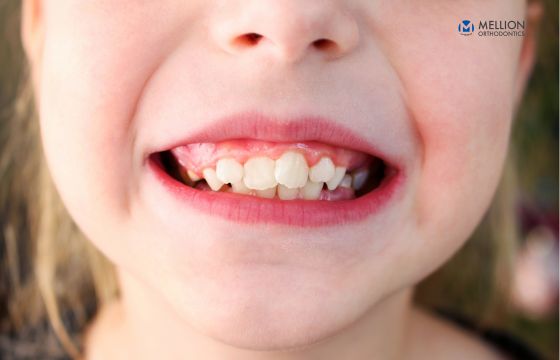
In an ideal scenario, the jaws are large enough to accommodate a child’s erupting teeth into a horseshoe-shaped arch. In situations where this isn’t possible, the most common result is permanent teeth that aren’t correctly aligned or crowded into whatever position they can find in the mouth.
This is the most common problem we encounter when meeting families for the first time. A child will smile and show us overlapped and rotated teeth. This orthodontic term is called “crowding” (it isn’t overly scientific, but it is easy to visualize). In a young child starting to have permanent teeth erupt, crowding shows itself as teeth competing for insufficient space.
Crowding can lead to many oral problems. Crowded teeth make brushing and flossing more difficult as the brushes can’t reach the entire tooth, promoting the growth of plaque, tartar, and bacteria. The prolonged growth of plaque, tartar, and bacteria can eventually cause gum problems and tooth decay.
Underbite
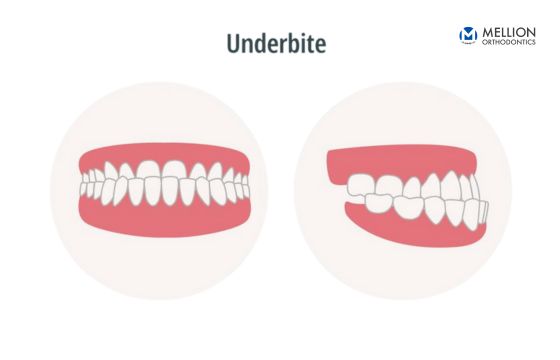
An underbite is a dental condition where a patient bites and the lower teeth protrude ahead of the upper teeth. This can cause pain and discomfort, and some patients are conscious of their facial appearance with an underbite.
Some underbite cases are mild, while others are very severe, and the lower teeth extend far from the upper teeth.
Several factors can contribute to an underbite. Some are caused by the patient–such as thumb sucking. Other causes are genetic in nature, such as excessive lower jaw growth.
An underbite can eventually cause complications in breathing, speech impediments, pain or discomfort of the jaw, and poor oral hygiene. Underbite issues range from mild to severe, and orthodontic treatment is essential to solve this issue. In some instances, an interdisciplinary treatment approach involving coordination with oral and maxillofacial surgeons may be recommended, especially for severe cases of underbite, where orthognathic surgery may be considered part of the comprehensive treatment plan, performed concurrently with orthodontic intervention.
Overbite
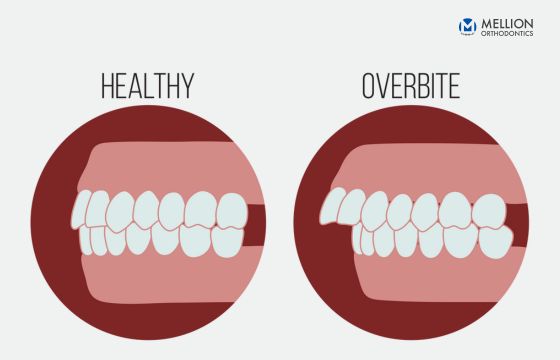
An overbite, also called a “deep bite,” is another common orthodontic problem. This is where the lower teeth disappear entirely behind the upper front teeth when the patient closes their mouth.
Overbites differ in severity and the necessary orthodontic treatment to correct them. Minor overbites of about 2mm are within a normal range, while severe overbites require comprehensive orthodontic treatment. If left untreated, overbite cases can lead to difficulty breathing, discomfort or even pain when chewing, excessive tooth wear, and gum and bone loss.
Open Bite
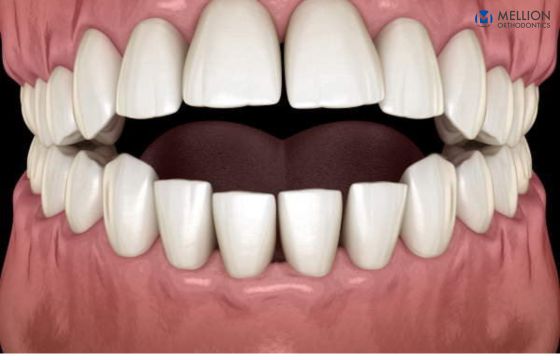
An open bite is a malocclusion where the front upper and lower front teeth do not come into contact when closing the mouth. Only the back teeth touch. Since the upper and lower teeth don’t meet adequately in the front, the teeth have opening even when they come together. The cause of open bite is either tooth position, jaw position, or a combination of both. They can occur in the front teeth ( anterior open bite) or the back teeth (lateral open bite).
Open bites, too, can be passed down by genetics. The root cause of open bites in children is thumb sucking or the use of a pacifier in kids, which causes the strain. Usually, this condition is naturally cured at age four and doesn’t follow through with adult life. However, as the child develops permanent teeth and jaw bones strengthen, medical treatment is mandatory to cure it. Another reason for an open bite is tongue thrusting, which pushes teeth when speaking or swallowing.
Crossbite
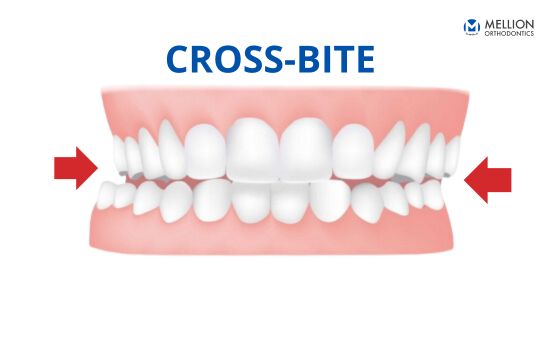
Crossbite is a teeth misalignment issue in which the front teeth are sunken inside the lower teeth when the mouth is closed, which is the opposite scenario of an underbite. The differentiating factor between crossbite and underbite is that underbite issues protrude the entire lower jaw, while only certain upper teeth are affected in crossbite.
Crossbite can also be due to inherited genetics causing the misalignment of the teeth and because of habits such as prolonged thumb-sucking, pacifier use, and delayed loss of primary teeth.
Abnormal jaw growth is also a contributing factor for crossbite when the upper jaw is narrower than the lower jaw, and thus the upper teeth reside inside the lower teeth when biting down.
Overjet
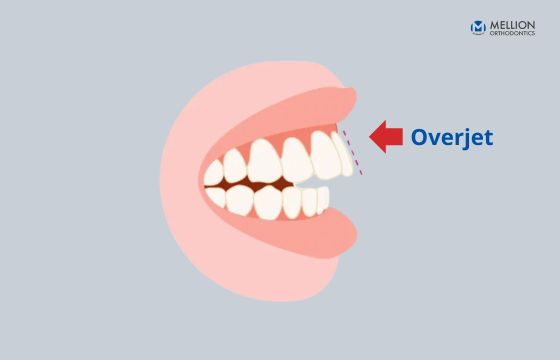
Overjet is an orthodontic problem where the top front of the teeth protrudes outwards further than the bottom teeth. In this malocclusion issue, a horizontal gap between the upper and lower row of teeth can be witnessed. The teeth sticking outwards appear larger and highly prominent. Overjet is generally mistaken for an overbite, but the difference between the two is that overjet has horizontal gaps between the upper and lower teeth, while overbite is vertical.
There is no definitive reason for overjet. It could be hereditary, passed down through generations, or the patient’s skeletal structure. The external factors causing overjet are similar to the above-mentioned orthodontic problems: thumb sucking, prolonged use of pacifier or bottle, aggressive tongue thrusting, or delayed growth of permanent teeth.
Patients with overjet may experience speech problems, discomfort or pain when eating, cavities, plaque, and gum decay. In addition, temporomandibular disorder can also be a factor in prolonged overjet issues. Pain and dysfunction in the muscles that move the mouth and the jaw joint are symptoms of temporomandibular disorder (TMD).
Excessive Spacing
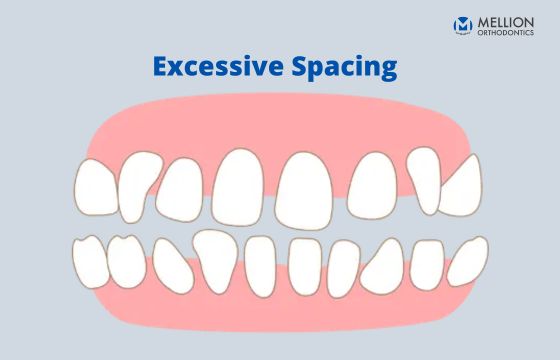
Excessive spacing is when the gap between the teeth is huge than average. The clinical term for excessive spacing of teeth is diastema. The gapping in the teeth can occur anywhere in the mouth, but the typical case of diastema is the front teeth. Although excessive teeth spacing is typical in children and adults, children switching from primary to permanent teeth are usually the victims of excessive spacing.
The reasons for excessive spacing could be due to missing teeth, excessive space in the jaw for the size of the erupting teeth, or even genetics. Though diastema doesn’t lead to any oral health crisis and is also an aesthetic concern, it does cause gum problems for some.
Treatment for Orthodontic Problems At Mellion Orthodontics
Mellion Orthodontics is a one-stop clinic for the above-mentioned orthodontic issues and any cosmetic correction to improve the jaw and teeth’s aesthetics, resulting in boosted self-esteem. The solutions Mellion Orthodontics offers to treat bad bites are listed below:
Traditional Metal Braces
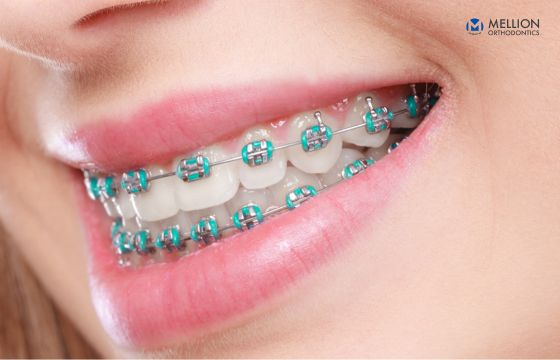
Traditional metal braces have been the most common choice for a long time because they’re practical and affordable. It is the most preferred brace for adults. It involves brackets and metal wires where the bracket is glued to the teeth, and the wires are run over the teeth, pulling them in their correct placement. Although highly effective, its aesthetics, food restrictions, and difficulty maintaining oral hygiene have people choosing its alternative.
Ceramic (clear) Braces
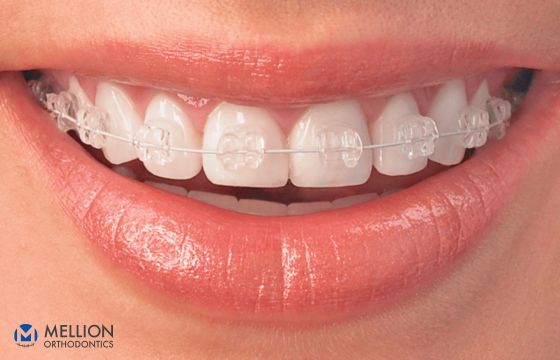
Ceramic braces, also referred to as clear braces, are less visible and look good aesthetically as the wires and brackets are made to match the teeth’s color. This makes them a top pick braces for kids seeking orthodontic treatment Compared to traditional metal braces, ceramic braces are less painful and harsh to the gums and cheeks. It is a viable and affordable option than Invisalign, and in fact, delivers faster results than Invisalign, while one must still be selective of the food as it can get stuck in the braces.
Invisalign Aligners
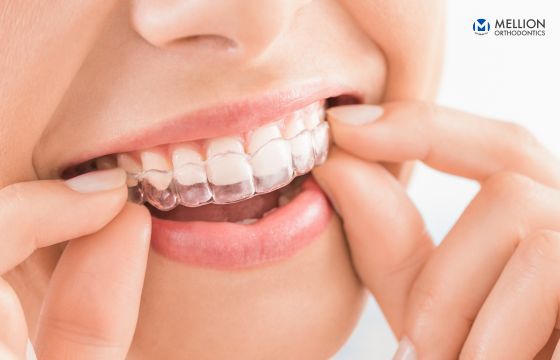
Invisalign retainers are the modern solution to traditional braces and the contraptions of wires and brackets. Made of thermoplastic material, Invisalign is a removable tray that helps treat moderate bite conditions and perfectly aligns the teeth. Since it is removable, there are no restrictions on food, and patients can easily remove it for proper oral care. So, this makes them favored braces for teens seeking orthodontic solutions. Wearing it for 20+ hours is mandatory for effective and faster results.
Palate Expander
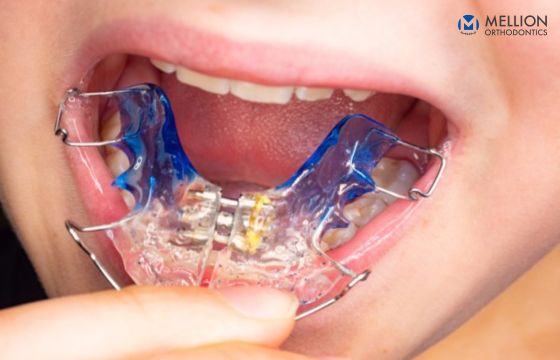
Palate expander is primarily an early child and teen orthodontic treatment to widen the upper jaw, also known as maxilla, before the braces treatment. While palate expander is not mandatory before braces, severe crowding and mild crossbites require this treatment to expand the palatal bones.

